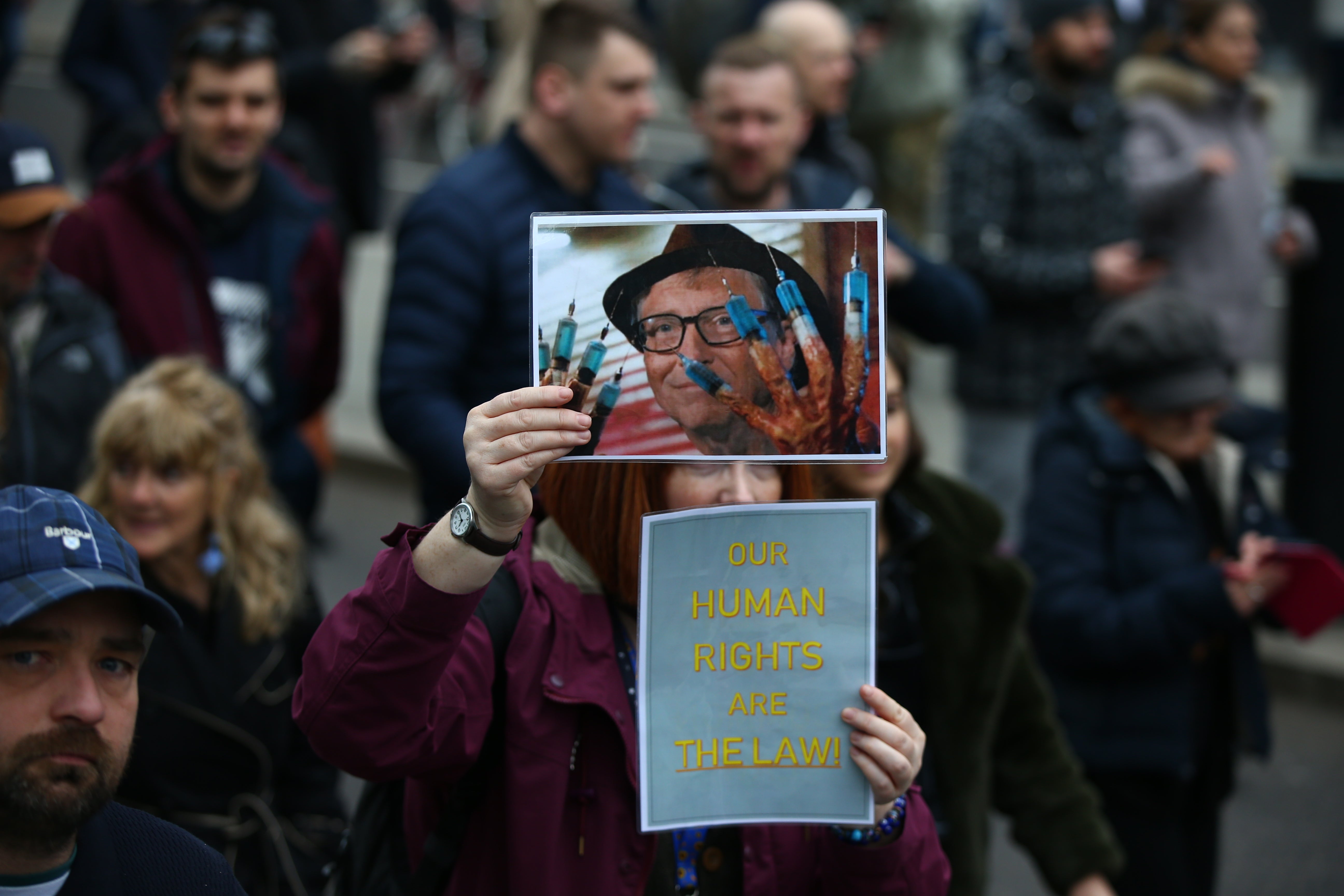AI reveals how Bill Gates Covid conspiracy and other theories evolved online
Analysis shows conspiracies incorporate details from unrelated misinformation and real-world events as they evolve

Your support helps us to tell the story
From reproductive rights to climate change to Big Tech, The Independent is on the ground when the story is developing. Whether it's investigating the financials of Elon Musk's pro-Trump PAC or producing our latest documentary, 'The A Word', which shines a light on the American women fighting for reproductive rights, we know how important it is to parse out the facts from the messaging.
At such a critical moment in US history, we need reporters on the ground. Your donation allows us to keep sending journalists to speak to both sides of the story.
The Independent is trusted by Americans across the entire political spectrum. And unlike many other quality news outlets, we choose not to lock Americans out of our reporting and analysis with paywalls. We believe quality journalism should be available to everyone, paid for by those who can afford it.
Your support makes all the difference.Scientists have developed a new machine learning tool that can identify Covid-19-related conspiracy theories on social media and predict how they evolved over time, an advance which may lead to better ways for public health officials to fight misinformation online.
The study, published in the Journal of Medical Internet Research, analysed anonymised Twitter data to characterise four Covid-19 conspiracy theory themes – such as one that erroneously claims the Bill and Melinda Gates Foundation engineered or has malicious intent related to the pandemic.
Using the AI tool’s analysis of more than 1.8 million tweets that contained Covid-19 keywords, the scientists from the Los Alamos National Laboratory in the US categorised the posts as misinformation or not, and provided context for each of these conspiracy theories through the first five months of the pandemic.
“From this body of data, we identified subsets that matched the four conspiracy theories using pattern filtering, and hand labeled several hundred tweets in each conspiracy theory category to construct training sets,” explained Dax Gerts, a computer scientist and co-author of the study from the Los Alamos National Laboratory.
The four major themes examined in the study were that 5G cell towers spread the virus; that the Bill and Melinda Gates Foundation engineered or have “malicious intent” related to Covid-19; that the novel coronavirus was bioengineered or was developed in a laboratory; and that vaccines for Covid-19, which were still in development during the study period, would be dangerous.
“This allowed us to observe the way individuals talk about these conspiracy theories on social media, and observe changes over time,” said Mr Gerts.
“A lot of machine-learning studies related to misinformation on social media focus on identifying different kinds of conspiracy theories. Instead, we wanted to create a more cohesive understanding of how misinformation changes as it spreads,” study co-author Courtney Shelley, from the Los Alamos National Laboratory, said in a statement.
One of the study’s key findings was that as conspiracy theories evolved, people incorporated details from other unrelated theories as well as real-world events.
For example, the conspiracy theory that Bill Gates’ foundation had malicious intent related to Covid-19 was linked to a Reddit “Ask Me Anything” session that the billionaire participated in last year, where he highlighted research funded by his foundation to develop injectable invisible ink that could be used to record vaccinations.
“Immediately after this event, the prominence of words associated with vaccine-averse conspiracy theories increased, with tweets suggesting that the Covid-19 vaccine would be used to secretly microchip individuals for population control,” the study noted.
By monitoring online conspiracy theories this way, the scientists believe public health officials could identify the ones that are gaining traction on social media and develop ways to preempt widespread acceptance of such falsehoods.
“It’s important for public health officials to know how conspiracy theories are evolving and gaining traction over time. If not, they run the risk of inadvertently publicizing conspiracy theories that might otherwise ‘die on the vine’,” MsShelley added.
Join our commenting forum
Join thought-provoking conversations, follow other Independent readers and see their replies
Comments